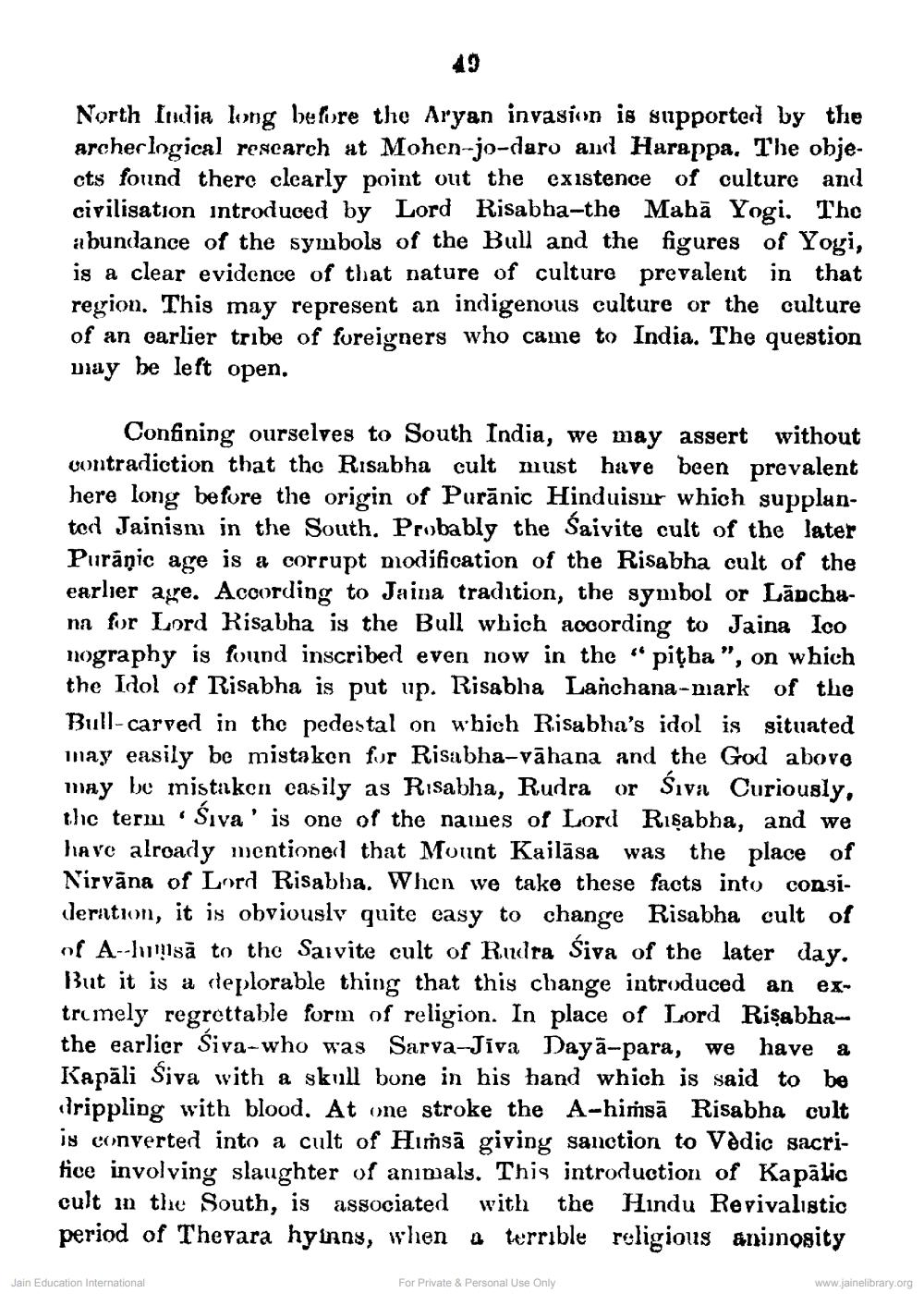________________
19
North India long before the Aryan invasion is supported by the archer logical rescarch at Mohen-jo-daro and Harappa, The objects found there clearly point out the existence of culture and civilisation introduced by Lord Risabba-the Mahā Yogi. The abundance of the symbols of the Bull and the figures of Yogi, is a clear evidence of that nature of culture prevalent in that region. This may represent an indigenous culture or the culture of an earlier tribe of foreigners who came to India. The question may be left open.
Confining ourselves to South India, we may assert without contradiction that the Rosabha cult must have been prevalent here long before the origin of Purānic Hinduisnr which supplunted Jainism in the South. Probably the Saivite cult of the later Purāņic age is a corrupt modification of the Risabha cult of the earlier age. According to Jaina tradition, the symbol or Lāpchana for Lord Risabha is the Bull wbich according to Jaina Ico nography is found inscribed even now in the “pitba", on which the Idol of Risabha is put up. Risabha Lanchana-mark of the Bull-carved in the pedestal on which Risabha's idol is situated may easily be mistaken fur Risabha-vāhana and the God above may be mistaken casily as Risabha, Rudra or Siva Curiously, the term · Siva' is one of the names of Lord Rışabha, and we have alroady mentioned that Mount Kailāsa was the place of Nirvāna of Lord Risabha. When we take these facts into considerntion, it is obviously quite casy to change Risabha cult of of A-lumsā to the Saivite cult of Rudra Siva of the later day. But it is a steplorable thing that this change introduced an extrumely regrettable form of religion. In place of Lord Rişabhathe earlier Siva-who was Sarva-Jiva Dayā-para, we have a Kapāli Siva with a skull bone in his hand which is said to be ilrippling with blood. At one stroke the A-hińsā Risabha cult is converted into a cult of Humnsã giving sanction to Vedic sacrifice involviny slaughter of animals. This introduction of Ka pālic cult in the South, is associated with the Hindu Revivalistic period of Thevara hyinns, when a terrible religious animosity
Jain Education International
For Private & Personal Use Only
www.jainelibrary.org




